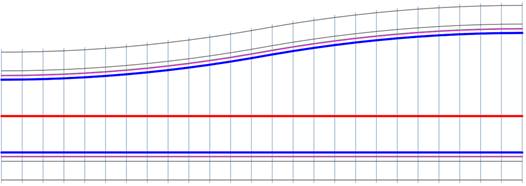Use the Corridor Transition Panorama vista for creating and editing corridor transitions.
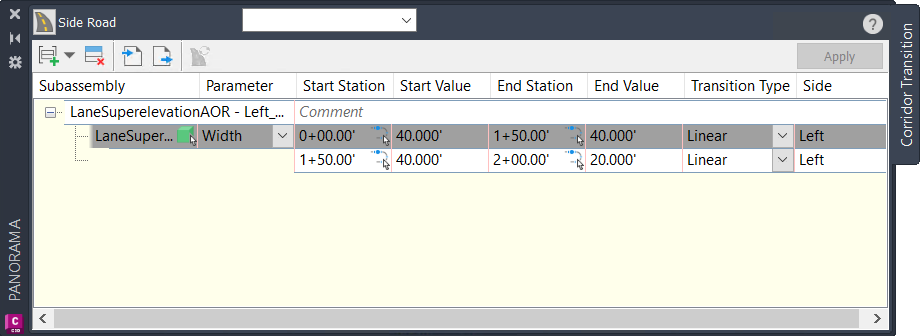
When you select the Edit Corridor Transition command, the Corridor Transition Panorama vista is displayed and a prompt is displayed at the command line to select the subassembly to transition.
Use the command line prompts to select which subassembly to transition and which parameter to transition, and then select stations, values, and transition type.
You can also specify values in the Corridor Transition Panorama vista.
When you select a row in the Panorama vista, the corresponding transition is highlighted with blue symbols in the drawing.
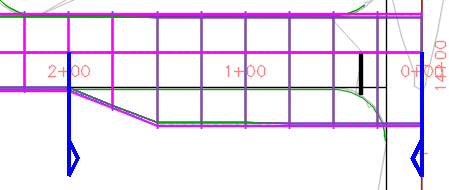
Transition Types
Several different transition types are available to create.
Linear
A simple linear transition, where each calculated station is based on the following formula:
Start Value + ((Distance from Start Station / Total Distance) * Delta)
Where:
Delta = End Transition Value - Start Transition Value
StationDelta = Distance from Start Station / Total Transition Distance
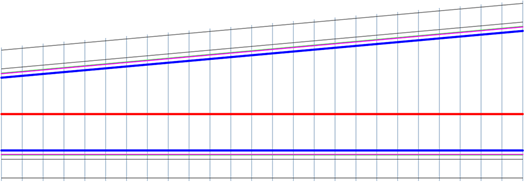
Bay Taper
A reverse curve transition that uses the following formulas:
For the first 33.33% of the transition distance:
Start Value + (((StationDelta * 3) ^ 2) * (Delta / 4))
Between 33.33% and 66.66% of the transition distance:
Start Value + (Delta / 4) + (((StationDelta * 3) - 1) * (Delta / 2))
From 66.66% to the end of the transition distance:
End Value - ((((1 - StationDelta) * 3) ^ 2) * (Delta / 4))
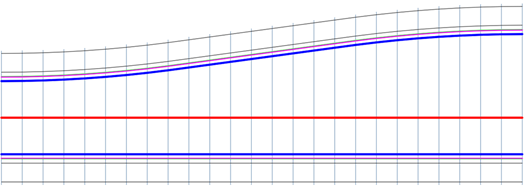
Cubic In
A cubic transition with the flare occurring from the beginning of the transition and flattening towards the end.
This transition uses the following formula:
End Value - (((1 - StationDelta) ^ 3) * Delta)
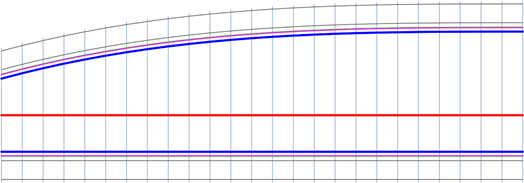
Cubic Out
A cubic transition with the flare occurring from the end of the transition and flattening towards the start.
This transition uses the following formula:
Start Value + (StationDelta ^ 3) * Delta

Parabolic In
A parabolic transition with the flare occurring from the beginning of the transition and flattening towards the end.
This transition uses the following formula:
End Value - (((1 - StationDelta) ^ 2) * Delta)

Parabolic Out
A parabolic transition with the flare occurring from the end of the transition and flattening towards the start.
This transition uses the following formula:
Start Value + ((StationDelta) ^ 2 * Delta)

Reverse Parabolic
The reverse parabolic transition uses the following formulas:
For the first 50% of the transition distance:
Start Value + (((StationDelta * 2) ^ 2) * (Delta / 2))
From 50% to the end of the transition distance:
End Value - ((((1 - StationDelta) * 2) ^ 2) * (Delta / 2))
